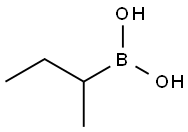Decanoic acid , CP,98% , 334-48-5
Synonym(s):
Decanoic acid;Capric acid;C10:0;1-Nonanecarboxylic acid;Acid C10
CAS NO.:334-48-5
Empirical Formula: C10H20O2
Molecular Weight: 172.26
MDL number: MFCD00004441
EINECS: 206-376-4
| Pack Size | Price | Stock | Quantity |
| 500ML | RMB36.80 | In Stock |
|
| others | Enquire |
PRODUCT Properties
| Melting point: | 27-32 °C(lit.) |
| Boiling point: | 268-270 °C(lit.) |
| Density | 0.893 g/mL at 25 °C(lit.) |
| bulk density | 690kg/m3 |
| vapor pressure | 15 mm Hg ( 160 °C) |
| FEMA | 2364 | DECANOIC ACID |
| refractive index | 1.4169 |
| Flash point: | >230 °F |
| storage temp. | room temp |
| solubility | Chloroform (Slightly), Methanol (Slightly) |
| pka | 4.79±0.10(Predicted) |
| form | Crystalline Solid |
| color | White |
| PH | 4 (0.2g/l, H2O, 20℃) |
| Odor | Odorless |
| biological source | plant |
| Odor Type | fatty |
| Water Solubility | 0.15 g/L (20 º C) |
| Merck | 14,1758 |
| JECFA Number | 105 |
| BRN | 1754556 |
| Stability: | Stable. Incompatible with bases, reducing agents, oxidizing agents. |
| LogP | 4.1 at 20℃ |
| CAS DataBase Reference | 334-48-5(CAS DataBase Reference) |
| NIST Chemistry Reference | Decanoic acid(334-48-5) |
| EPA Substance Registry System | Decanoic acid (334-48-5) |
Description and Uses
Decanoic acid, or capric acid, is a saturated fatty acid. Its formula is CH3(CH2)8COOH. Salts and esters of decanoic acid are called decanoates or "caprates". The term capric acid arises from the Latin "capric" which pertains to goats due to their olfactory similarities.
Capric acid occurs naturally in coconut oil (about 10%) and palm kernel oil (about 4 %), otherwise it is uncommon in typical seed oils. It is found in the milk of various mammals and to a lesser extent in other animal fats.
Two other acids are named after goats: caproic (a C6 fatty acid) and caprylic (a C8 fatty acid). Along with decanoic acid, these total 15 % in goat milk fat.
Manufacturing of esters for artificial fruit flavors and perfumes. Also as an intermediate in chemical syntheses. It is used in organic synthesis and industrially in the manufacture of perfumes, lubricants, greases, rubber, dyes, plastics, food additives and pharmaceuticals.
Pharmaceuticals
Decanoate salts and esters of various drugs are available. Since decanoic acid is a fatty acid, forming a salt or ester with a drug will increase its lipophilicity and its affinity for fatty tissue. Since distribution of a drug from fatty tissue is usually slow, one may develop a long-acting injectable form of a drug (called a Depot injection) by using its decanoate form. Some examples of drugs available as a decanoate ester or salt include nandrolone, fluphenazine, bromperidol, haloperidol and vanoxerine.
Safety
| Symbol(GHS) |  GHS07 |
| Signal word | Warning |
| Hazard statements | H315-H319-H412 |
| Precautionary statements | P264-P273-P280-P302+P352-P305+P351+P338-P332+P313 |
| Hazard Codes | Xi |
| Risk Statements | 36/37/38-36/38 |
| Safety Statements | 26-36-37/39 |
| WGK Germany | 1 |
| RTECS | HD9100000 |
| Hazard Note | Irritant |
| TSCA | Yes |
| HS Code | 29159080 |
| Hazardous Substances Data | 334-48-5(Hazardous Substances Data) |
| Toxicity | LD50 i.v. in mice: 129 ±5.4 mg/kg (Or, Wretlind) |



